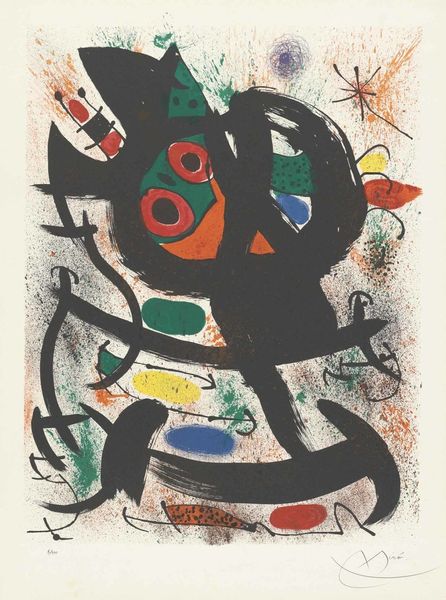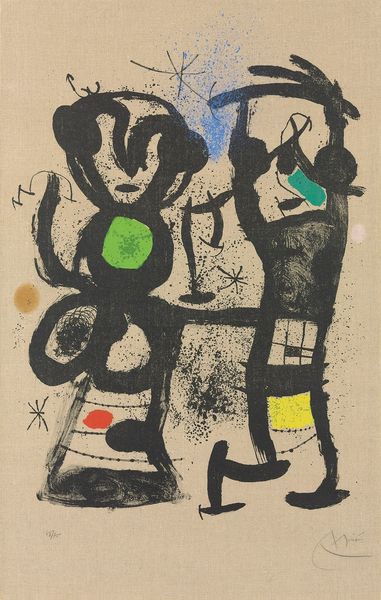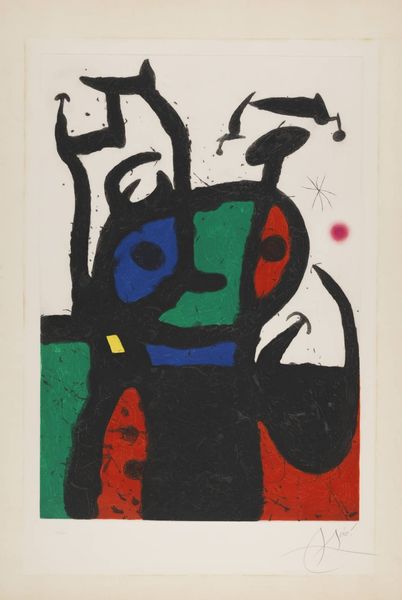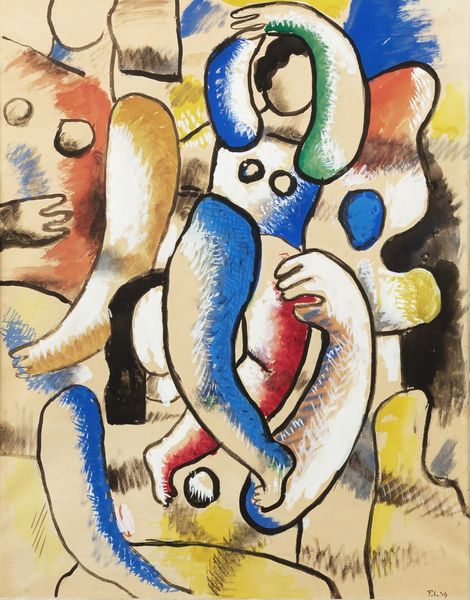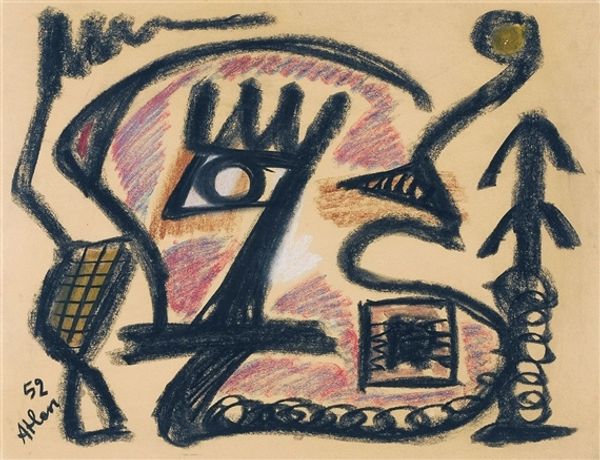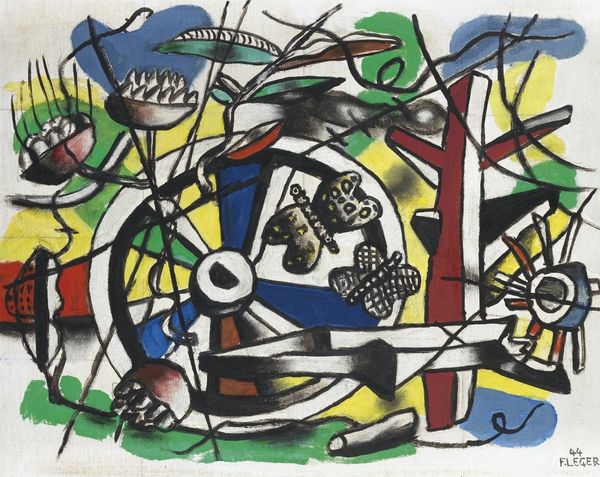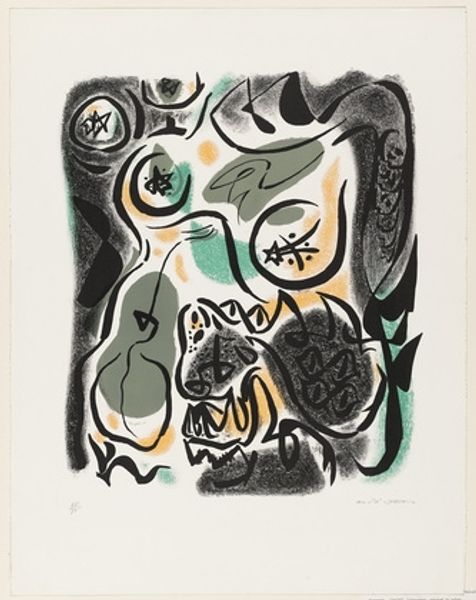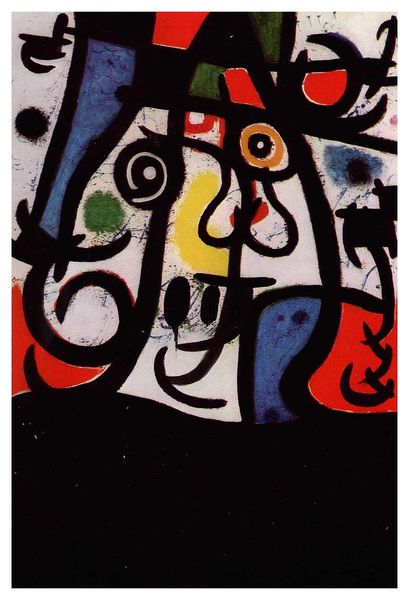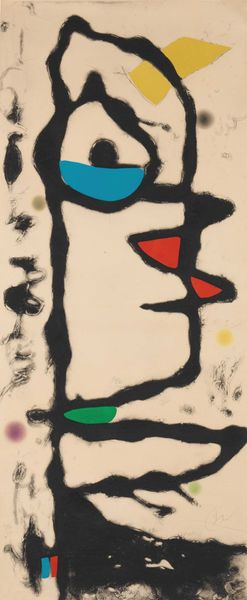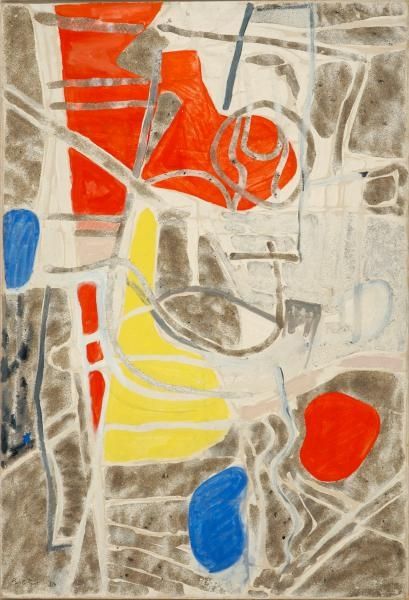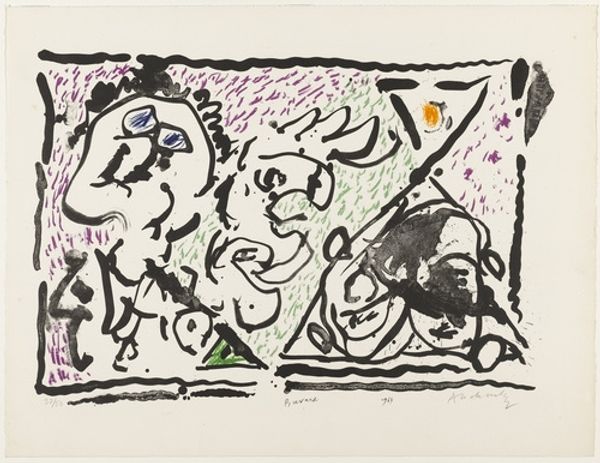
Copyright: Modern Artists: Artvee
Editor: Here we have Joan Miró’s “Joan Miró y Cataluña,” a linocut print from 1968. It's full of vibrant colour and playful, almost childlike symbols. There’s a chaotic energy that I find captivating. How would you interpret this work? Curator: Considering Miró's historical context, specifically his relationship to Catalonia, helps unlock deeper meaning. This print was created during a time of political repression under Franco's dictatorship. Do you see any ways in which Miró might be subtly responding to this political environment through his artistic choices? Editor: I notice that while it's abstract, there’s still a sense of underlying tension… maybe in the scratchy lines and the somewhat confined composition? Is that a reflection of what you mentioned, the political turmoil at the time? Curator: Precisely. The abstract symbols could be interpreted as a coded language, a way to express Catalan identity and resist the suppression of their culture under Franco. The bright colors, while seemingly cheerful, can also be seen as a form of defiance, a celebration of Catalan spirit in the face of oppression. Miró consistently used his art to assert Catalan identity within a fraught political landscape. How might knowing this change our understanding of abstract art more broadly? Editor: That’s really interesting. I never thought about abstract art as potentially having such a strong political voice. I will look at abstraction with fresh eyes going forward. Curator: Exactly. Recognizing the socio-political context can profoundly impact our reading of any artwork. Editor: Thank you, that makes this piece so much more impactful for me! Curator: Indeed! Art becomes a mirror reflecting societal currents, and a tool to reshape cultural values.
Comments
No comments
Be the first to comment and join the conversation on the ultimate creative platform.
